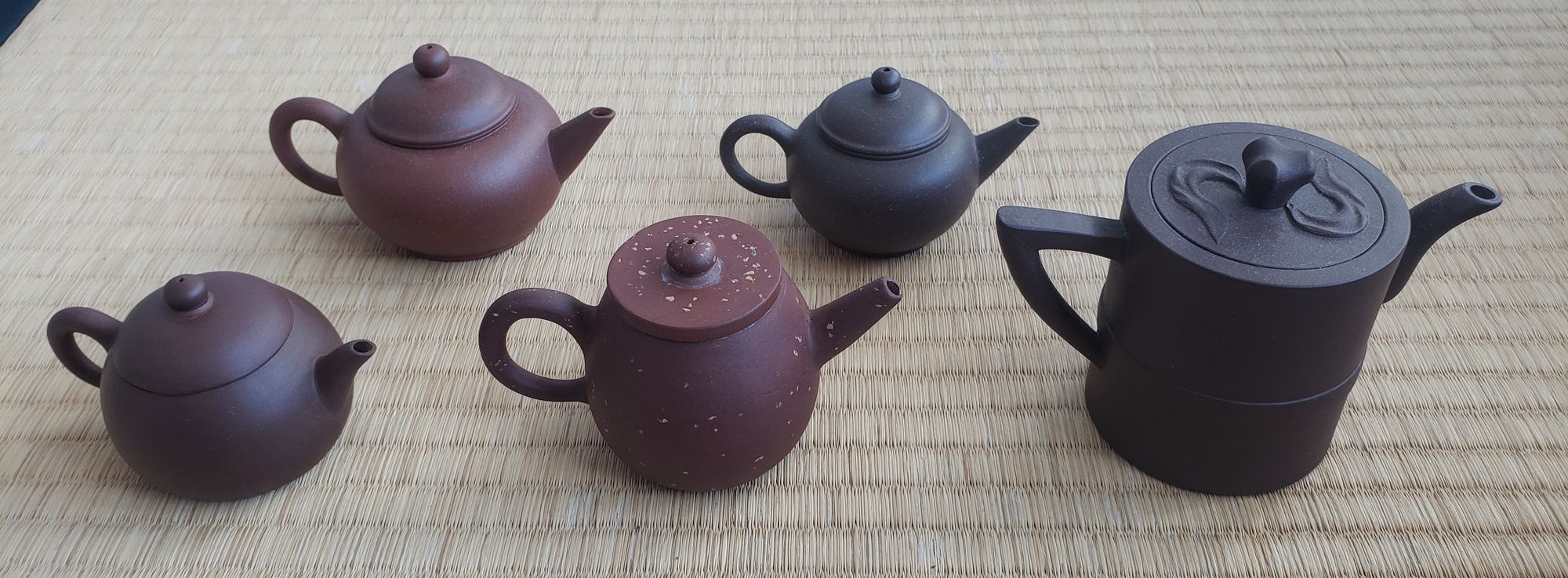Zini (紫泥) Ore and Clay
Listen to the Editorial Conversation for this chapter:
From the earliest refinement of zisha ore, the majority of wares have been formed from zini clay (紫泥, “purple clay”)[1], a form of argillaceous[2] siltstone with a large range of characteristics, varying across mining region and sub-type of ore. The highest quality zini ore generally forms in the middle to upper layers of the jiani strata, in striated deposits layered with other clays; most Qing Shui Ni or unnamed zini sub-types[3] are mined at the surface layer, occasionally penetrating to the middle layer. The zini ore deposits form in either thin veins or symmetric lenses, varying from as small as 10cm to as large as 1m thick.
The majority of zini displays attributes, from ore to fired clay, highly desirable for the making of teapots: easy to shape because of its high homogeneity, good plasticity, high strength, and relatively low shrinkage[4]. Most zini ore is usable in pure form, without blending – though zini, because of its common availability and desirable attributes, was the most common zisha blending ore. Wares of pure zini are (generally) porous with a high proportion of open-pores[5], and an average mica-material grain size larger than 0.01mm.

This page is for paying subscribers only
Subscribe NowAlready have an account? Log in